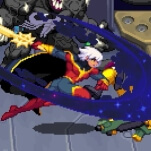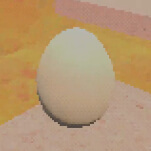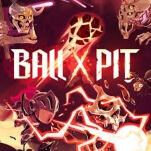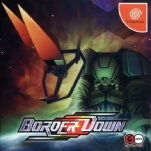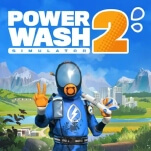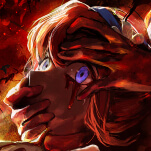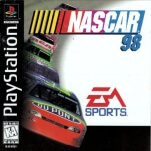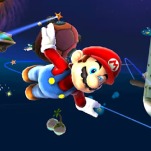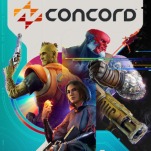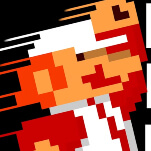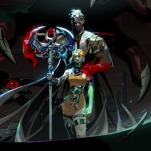No, the Saturn Didn’t Fail Because Sega Didn’t Anticipate the Rise of 3D Videogames
Screenshot from the Sega Saturn launch game Virtua Fighter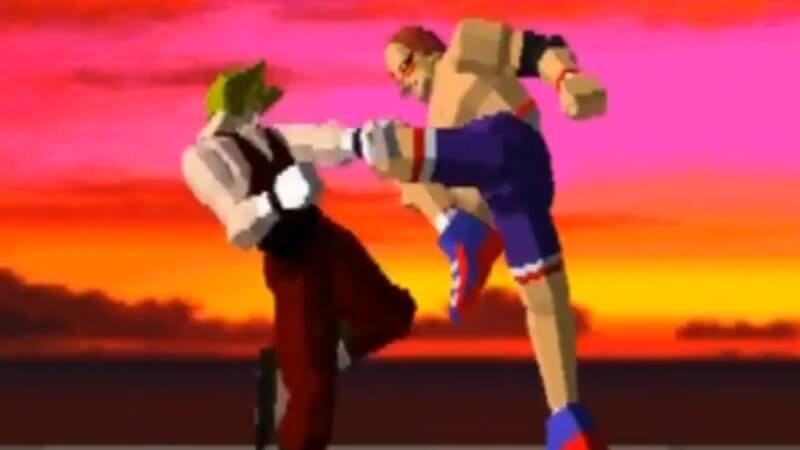
There’s a belief that you might see going around every now and again that simply will not die: that the Sega Saturn, which came out 30 years ago this month, failed because Sega was not aware that 3D videogames were going to be important during the 32-bit era. That they just weren’t prepared for what was coming. Only Sony knew of the true power of 3D, you see.
This whole thought process stems from the idea that, because the Saturn wasn’t quite as 3D-focused as the Playstation, that Sega just wasn’t aware that 3D was going to be The Future of Videogames. That the Saturn added additional 3D-strengthening hardware later in development only strengthened the resolve of these folks to be very wrong—why else would Sega need that, if they weren’t completely unprepared for the rise of 3D? So goes the thinking, anyway.
It’s all a bit silly, especially since we can see pretty clearly why the Saturn failed, without the need for going all conspiracy theory. You don’t need to invent issues with Sega’s processes where they didn’t exist, because Sega was plenty capable of doing that on their own. Here’s the quick version: the Saturn failed in North America because Sega of America decided to surprise launch the system in May of 1995 at E3 during their presentation, instead of in September of 1995—on Saturday, September 2, to be specific, a day nicknamed “Saturnday” so you are aware of the level of thought Sega had put into the launch date already—when, oh, every retailer and third-party developer and also a bunch of Sega’s own development partners and internal studios were going to be ready for the launch.
Because there were fewer consoles than expected available given the surprise launch, some retailers had to be left out entirely. Like KB Toys, a huge retailer from the era that had a couple thousand American locations at its peak, and oh, refused to carry any Saturn products for the life of the system following this launch snub. Not that there was much to stock at first, or later: there was Clockwork Knight, and a good but not amazing port of Daytona USA, the impressive but short Panzer Dragoon, a version of Virtua Fighter that received an updated re-release later on, and two sports games, Pebble Beach Golf Links and Worldwide Soccer: International Victory. This was the Saturn’s launch lineup in North America. And then there was nothing, at all, for two-and-a-half months later, until Bug! released, with more games coming in September at what was originally supposed to be the Saturn’s launch date.
Why did the Saturn fail in North America? There’s the above, and also that Sony got on stage at the same E3 that Sega surprise launched the Saturn at to say, “by the way, the Playstation will be $100 cheaper if you want to just wait a few more months.” The Playstation reportedly outsold the Saturn’s five-month totals in North America in mere days when it finally launched a week after the original Saturn release date. And then Sega of America didn’t release nearly as many games for the Saturn in their region as Sega of Japan did in theirs, and that third-party publishers ended up following suit to even more extreme degrees: while about 45% of Sega’s games from the era ended up in both Japan and North America by the end of the console’s life, just 253 of 1,028 total Saturn games came out in the latter. The market was smaller because of the lack of console sales, yes, but the lack of console sales continued because of the lack of games. There’s a reason the Saturn managed to finish ahead of the Nintendo 64 in Japan, despite the Dreamcast releasing in the region in 1998 and taking over as Sega’s primary vehicle from that point forward, and it’s because there were games to play and retailers to buy those games from.
Would there have been more games for the North American Saturn if Sega had paid more attention to the rise of 3D? Sega of America’s marketing was almost exclusively 3D-based, with COO and then-president Bernie Stolar—who had come over from Sony in 1997 after co-founding Sony Computer Entertainment America and helping it to an early lead in the region over Sega—focused heavily on things that were going to look impressive in a commercial. And the Saturn in Japan was the same hardware as America’s, just in a different color. Maybe the color of the system was the problem, then…
Anyway. Sega wasn’t surprised by the rise of 3D, which should be self-evident to anyone who has paid even a little attention to the company’s history. The Saturn was released in November of 1994 in Japan. Virtua Racing came out in August of 1992 in arcades, on Sega’s brand new Model 1 arcade board that had been designed exclusively with 3D in mind, and Virtua Racing was meant to be the project that would show off just how much better Sega’s tech was at that point than their rivals, Namco, who had released Winning Run in 1988. Virtua Racing used actual polygons—flat shaded polygons, yes, not textured, but true 3D, not pre-rendered to look that way and not faux. The Model 1 board was capable of rendering 180,000 polygons per second, compared to Namco’s System 21 board, the “Polygonizer,” used for Winning Run, which rendered 60,000 polygons per second. Development of this board began in 1988, when Sega was figuring out how to stay well ahead of the curve at home in the arcades. As Tom Petit, then an executive at Sega of America, told RePlay magazine in January of 1993:
About five or six years ago, we had a global strategy session for Sega as a company. In that room, we discussed entering the consumer business. We talked about the 8-bit unit and the 16-bit unit which became the Sega Genesis System, which as you know is leading the home game market. In that same discussion, we also knew that in bringing out a product like Genesis, we’d be taking a dramatic step forward in home game technology, one that would penetrate current parameters of coin-op technology. In fact, we would be growing the two markets closer together, instead of creating a separation in technology which is always desirable in coin-op. So at that meeting, we discussed what the next level of coin-op technology would be. We set out then to conceive and create our polygon hardware system, which has now come out on the market in the form of Virtua Racing. We initially commissioned a hardware development program that, honestly speaking, was going to be introduced about a year and a half ago. However, it takes more than one or two years to develop a system that generates 6,500 polygons. You’re dealing with a lot of leading-edge technology, including custom chips that didn’t exist and had to be designed.
In the late ‘80s, 16-bit arcade hardware was still dominating the scene, and it would take some more time for 32-bit technology and true 3D to take over. It was evident to Namco and Sega, at the least, that this was the direction things were heading in. Namco’s Galaxian3, with its untextured polygons shown on a massive theater screen, arrived in 1990, and while difficult to replicate in a more standard-sized arcade machine (well, standard for Galaxian3, anyway) Namco released revised versions of it. These things don’t happen overnight, however. Namco had begun their explorations into 3D-style gaming in earnest with Pole Position in 1982, which was in development concurrently with Sega’s Turbo, an early chase-cam racer, but in 2.5D rather than full faux 3D like Pole Position. Of course, Sega would get in on the faux 3D game themselves with their incredible run of super scaler titles, like OutRun, Hang-on and Super Hang-on, After Burner, Space Harrier, and Galaxy Force, and they’d attempt to get many of those working on the Master System and Genesis, as well. Obviously not in as enjoyable or impressive of a form as their arcade counterparts, but getting them in playable form at all was its own kind of achievement, considering the gap in the technology.
-

-

-

-

-

-

-

-

-

-

-

-

-

-

-

-

-

-

-

-

-

-

-

-

-

-

-

-

-

-

-

-

-

-

-

-

-

-

-

-



